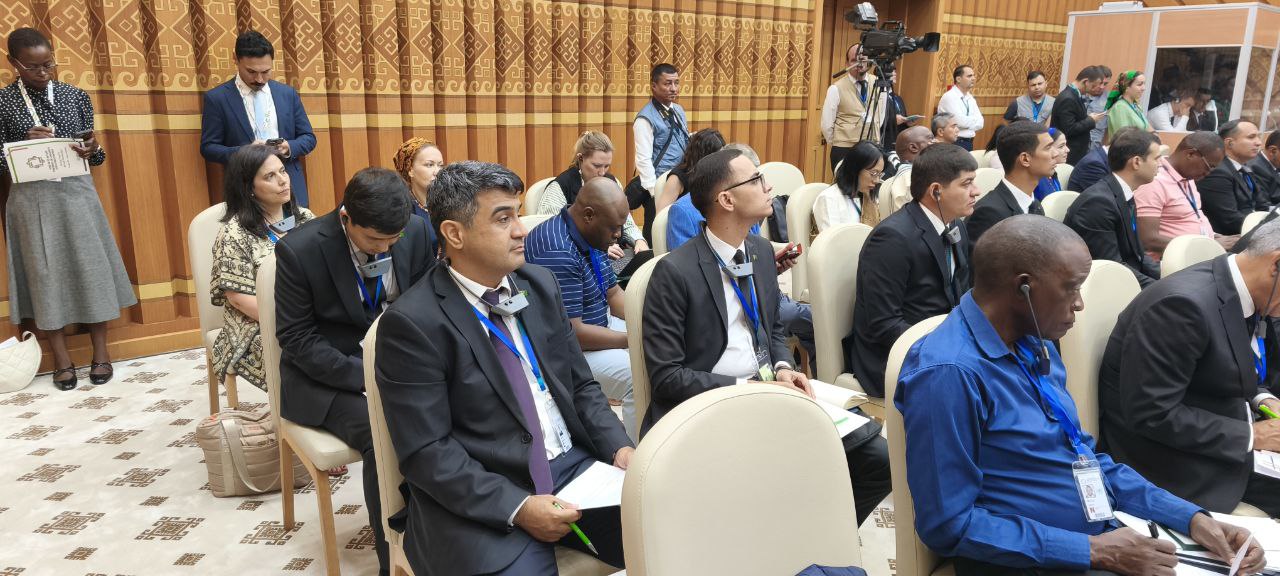By Haknazar HALJANOW
CEO, Dovletli Nesibe; Coordinator, Young Entrepreneurs’ Center of Ashgabat Committee, Party of Industrialists and Entrepreneurs of Turkmenistan; Participant, Civil Society Forum, UN LLDC3, Avaza, Turkmenistan
The Third United Nations Conference on Landlocked Developing Countries (LLDC3), held in the beautiful coastal city of Avaza, Turkmenistan, presented a powerful and timely platform for LLDCs to collectively assess our developmental challenges and opportunities. As a representative of both the private sector and civil society, I was honored to participate in the Civil Society Forum and contribute to meaningful discussions around economic inclusion, sustainable development, and equitable growth.
A key takeaway that resonated deeply with me—and one that must remain central to our agenda—is the pressing need to attract investment into rural regions of LLDCs. While infrastructure, trade corridors, and cross-border cooperation dominated the formal discussions, it is critical to recognize that the true engine of inclusive and sustainable development lies within the often-overlooked rural heartlands of our nations.
Why Rural Investment Matters
Rural areas in LLDCs are home to a large share of the population and are the backbone of our agricultural economies. Yet they are frequently deprived of adequate access to infrastructure, finance, education, and markets. This disparity limits national productivity, fuels urban migration, and deepens socioeconomic divides.
Investing in rural regions can transform these dynamics by:
- Generating local employment and reducing poverty;
- Improving food security and climate resilience through sustainable agricultural practices;
- Empowering women and youth, who disproportionately reside in and depend on rural economies;
- Reducing pressure on urban centers, which are often overstretched in terms of infrastructure and services.
From Avaza to Action: Recommendations from the Civil Society Forum
At the Civil Society Forum during LLDC3, we, the participants from across sectors and geographies, emphasized that unlocking the full potential of rural regions requires a multi-stakeholder approach:
- Public-Private Partnerships (PPPs): Governments must create incentives for private sector engagement in rural infrastructure, agro-processing, renewable energy, and digital connectivity. Blended finance and de-risking mechanisms are essential to encourage investment in high-potential but underserved areas.
- Youth and Entrepreneurship: Young people in rural areas must be empowered as drivers of innovation. As the Coordinator of the Young Entrepreneurs’ Center in Ashgabat, I have seen firsthand how access to training, finance, and mentorship can ignite a new generation of rural entrepreneurs. Scaling such initiatives regionally is vital.
- Localized Value Chains: Strengthening rural-urban linkages and developing local value chains ensures that rural communities move beyond subsistence to participate meaningfully in national and regional economies.
- Inclusive Governance: Investment strategies must be informed by the voices of rural communities. Civil society organizations and local leaders should have a seat at the table in shaping development priorities and ensuring accountability.
Turkmenistan’s Role and Vision
Turkmenistan, as host of LLDC3 and a proactive member of the global landlocked community, is uniquely positioned to lead by example. Our national strategies for rural development, spearheaded by forward-thinking entrepreneurs and supported by our Party of Industrialists and Entrepreneurs, demonstrate the possibilities when public ambition meets private initiative. Programs to support rural SMEs, improve road and rail connectivity, and promote sustainable agriculture are already creating tangible results.
Avaza Action Plan — a call to purpose
Avaza was not merely a venue—it was a vision. The sea breeze that met the mountains of conversation in the LLDC3 halls now carries with it the momentum of action. As we move forward, let us commit to centering rural development in the investment dialogue. For LLDCs, the path to resilience and prosperity runs not only through international corridors but through the villages, farms, and small towns that hold the soul of our nations.
Let us invest where it matters most. Let us build futures from the ground up.





Comments